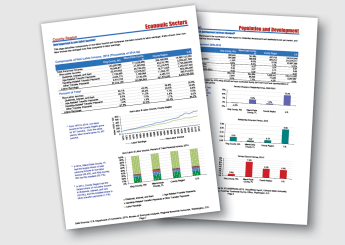Headwaters Economics’ Populations at Risk Tool allows users to quickly run downloadable reports for geographies across the United States—from census tracts to states to aggregates of multiple geographies.

The Populations at Risk Tool is free and easy to use to quickly download reports in Excel or as PDFs. Every report contains detailed socioeconomic information about populations more likely to experience adverse social, health, or economic outcomes due to race, age, gender, poverty status, or other factors. Data are from the U.S. Census Bureau’s American Community Survey (ACS).

Also Try Our Economic Profile System
Similar to Populations at Risk, the Economic Profile System (EPS) generates reports on a range of topics including local economics, demographics, and income sources while providing historic context and trends.